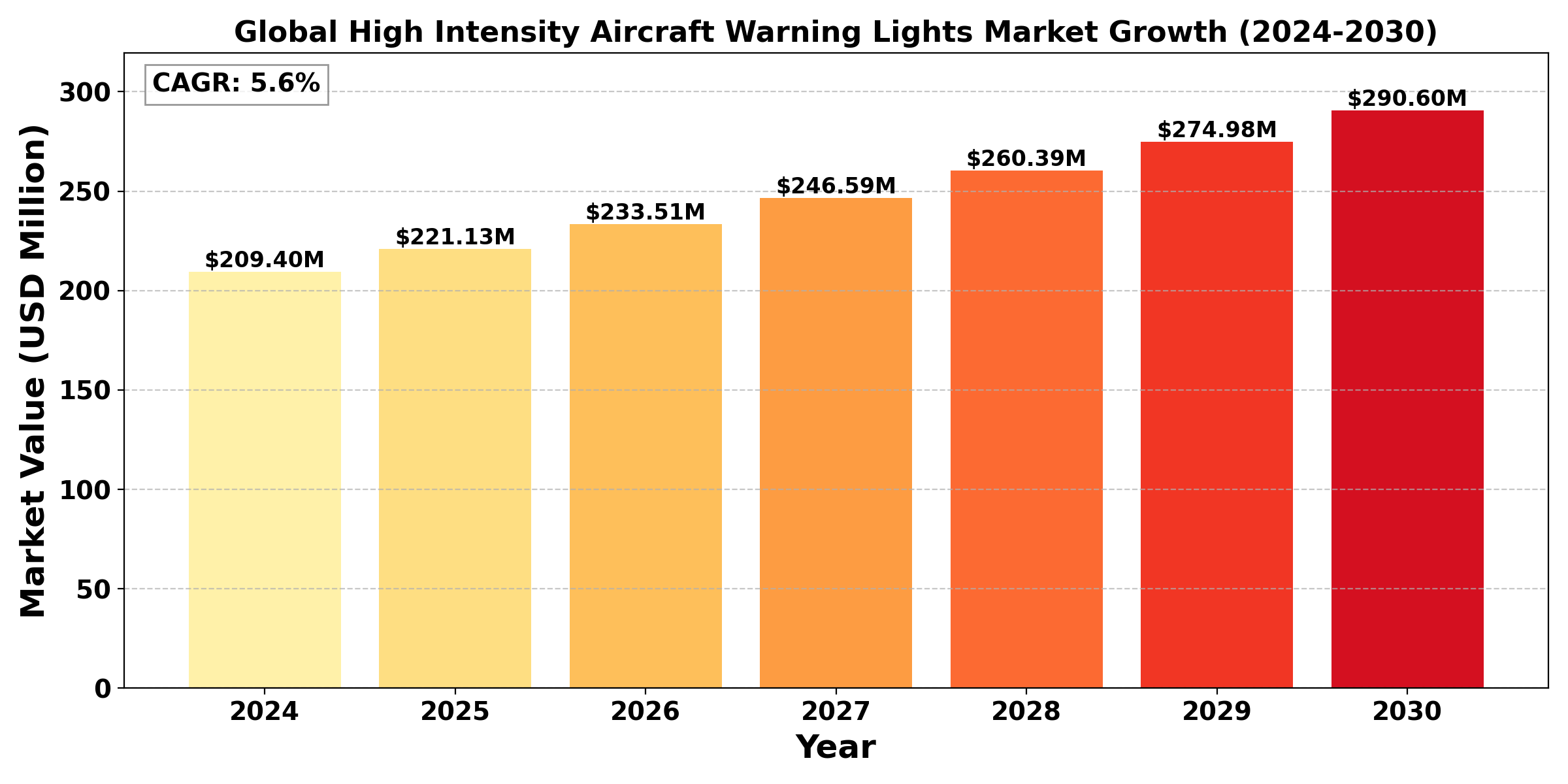TOP CATEGORY: Chemicals & Materials | Life Sciences | Banking & Finance | ICT Media

Download Report PDF Instantly
Report overview
The global High Intensity Aircraft Warning Lights market size was valued at US$ 209.4 million in 2024 and is projected to reach US$ 290.6 million by 2030, at a CAGR of 5.6% during the forecast period 2024-2030.
The United States High Intensity Aircraft Warning Lights market size was valued at US$ 53.2 million in 2024 and is projected to reach US$ 71.5 million by 2030, at a CAGR of 5.0% during the forecast period 2024-2030.
High Intensity Aircraft Warning Lights are powerful obstruction lighting systems designed for structures exceeding 150 meters in height, providing maximum visibility to aircraft during both day and night conditions.
The global High Intensity Aircraft Warning Lights market is experiencing robust growth, driven by the increasing construction of skyscrapers, expansion of offshore wind farms, and growing demand for enhanced aviation safety in urban areas. In 2023, total unit sales reached 95,000, with Asia-Pacific and North America accounting for 70% of global demand. The high-rise building sector remains the largest end-user at 40%, followed by offshore structures at 30%. Xenon strobe lights still dominate with a 55% market share, but LED-based high intensity lights are growing rapidly at 15% annually.
The market saw a 20% increase in demand for ICAO Type A/B compliant lights in 2023, reflecting global standardization efforts. Hybrid power systems (solar + battery backup) grew by 25% in sales, driven by reliability requirements in remote locations. The trend towards urbanization in developing countries led to a 15% rise in adoption for new skyscraper projects. R&D investments in adaptive intensity control systems increased by 30% in 2023, focusing on optimizing visibility while minimizing light pollution. The market faces challenges from the high initial cost and maintenance requirements, with a 5% increase in demand for long-term service contracts observed. Advancements in optical design improved beam patterns and reduced energy consumption by 10% year-over-year.

Report Overview
Aircraft warning lights are high-intensity lighting devices that are attached to tall structures and are used as collision avoidance measures.
This report provides a deep insight into the global High intensity Aircraft Warning Lights market covering all its essential aspects. This ranges from a macro overview of the market to micro details of the market size, competitive landscape, development trend, niche market, key market drivers and challenges, SWOT analysis, value chain analysis, etc.
The analysis helps the reader to shape the competition within the industries and strategies for the competitive environment to enhance the potential profit. Furthermore, it provides a simple framework for evaluating and accessing the position of the business organization. The report structure also focuses on the competitive landscape of the Global High intensity Aircraft Warning Lights Market, this report introduces in detail the market share, market performance, product situation, operation situation, etc. of the main players, which helps the readers in the industry to identify the main competitors and deeply understand the competition pattern of the market.
In a word, this report is a must-read for industry players, investors, researchers, consultants, business strategists, and all those who have any kind of stake or are planning to foray into the High intensity Aircraft Warning Lights market in any manner.
Global High intensity Aircraft Warning Lights Market: Market Segmentation Analysis
The research report includes specific segments by region (country), manufacturers, Type, and Application. Market segmentation creates subsets of a market based on product type, end-user or application, Geographic, and other factors. By understanding the market segments, the decision-maker can leverage this targeting in the product, sales, and marketing strategies. Market segments can power your product development cycles by informing how you create product offerings for different segments.
Key Company